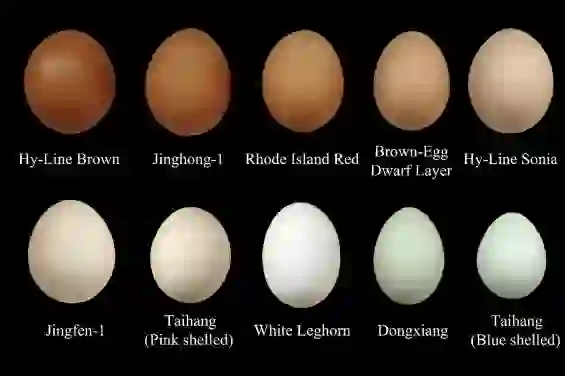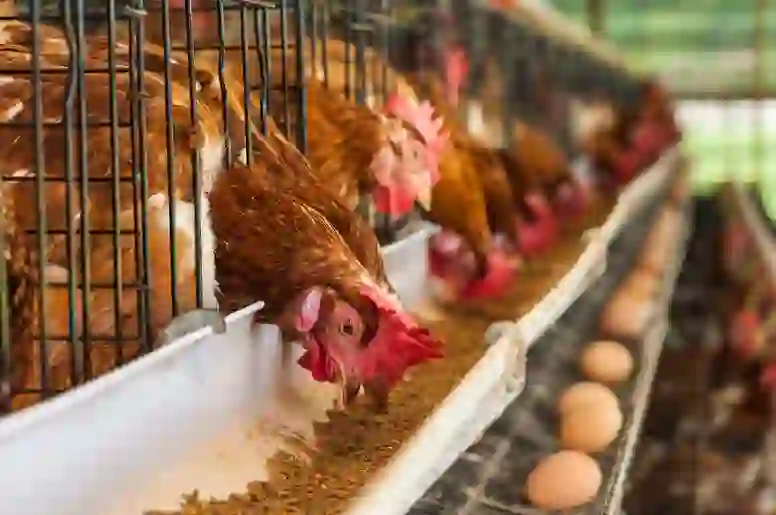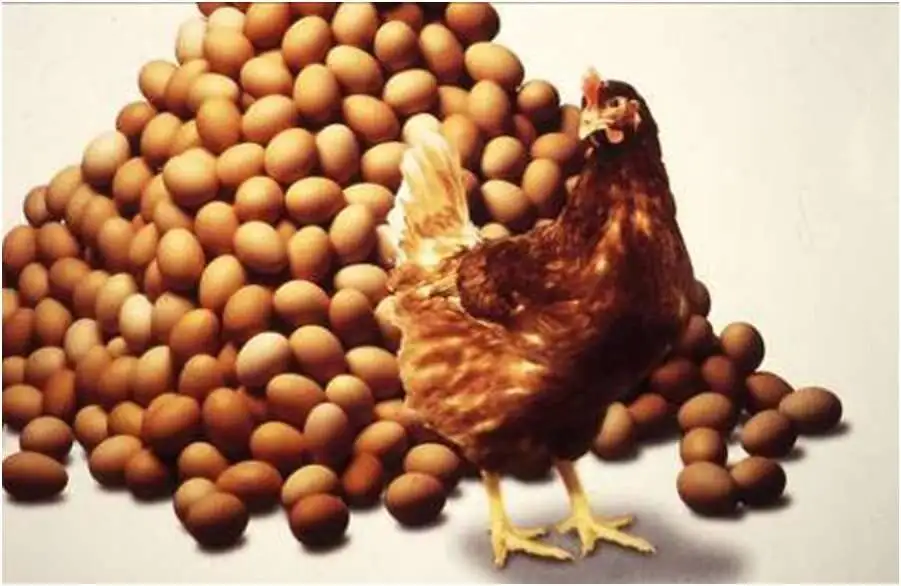
What are Layers?
If you’re new to the world of chicken farming, you may be wondering what exactly is a layer. In simple terms, a layer is a chicken that is bred for the purpose of laying eggs. In this blog post, we’ll explore the different types of layer breeds, their laying capacity, and other important information to help you get started with your own flock.
Layer Breeds
There are many different breeds of chickens that are commonly used for egg production. Here are a few of the most popular layer breeds:
Leghorn
The Leghorn is a breed of chicken that is known for its high egg production. Here are some key characteristics of Leghorns:
- Small to medium-sized bird
- White feathers and red comb and wattles
- Excellent egg layers, producing up to 280 eggs per year
- Active and flighty temperament
Rhode Island Red
The Rhode Island Red is another popular breed for egg production. Here are some key characteristics of Rhode Island Reds:
- Medium-sized bird with brownish-red feathers
- Good egg layers, producing up to 260 eggs per year
- Docile temperament
- Also suitable for meat production
Plymouth Rock
The Plymouth Rock is a dual-purpose breed, meaning it can be used for both egg and meat production. Here are some key characteristics of Plymouth Rocks:
- Medium to large-sized bird with black and white stripes
- Good egg layers, producing up to 200 eggs per year
- Calm and friendly temperament
- Also suitable for meat production
Laying Capacity
The laying capacity of a chicken depends on several factors, including its breed, age, and health. Here are some general guidelines for the laying capacity of different breeds:
- Leghorn: 280-320 eggs per year
- Rhode Island Red: 260-300 eggs per year
- Plymouth Rock: 200-250 eggs per year
It’s important to note that these are general guidelines and individual chickens may lay more or less eggs depending on various factors.
Comparing Layer Breeds
Here is a table comparing some of the key characteristics of the Leghorn, Rhode Island Red, and Plymouth Rock breeds:
| Breed | Egg Production | Temperament | Size |
|---|---|---|---|
| Leghorn | High (280-320) | Active and flighty | Small to medium |
| Rhode Island Red | Good (260-300) | Docile | Medium |
| Plymouth Rock | Good (200-250) | Calm and friendly | Medium to large |
Sussex
The Sussex is a breed of chicken that comes in several color variations, including white, red, and speckled. Here are some key characteristics of Sussex chickens:
- Medium to large-sized bird
- Good egg layers, producing up to 250 eggs per year
- Calm and friendly temperament
- Also suitable for meat production
Australorp
The Australorp is a breed of chicken that was originally developed in Australia. Here are some key characteristics of Australorp chickens:
- Large-sized bird with black feathers
- Excellent egg layers, producing up to 300 eggs per year
- Calm and docile temperament
- Also suitable for meat production
Orpington
The Orpington is a breed of chicken that comes in several color variations, including buff, black, and blue. Here are some key characteristics of Orpington chickens:
- Large-sized bird
- Good egg layers, producing up to 200 eggs per year
- Calm and friendly temperament
- Also suitable for meat production
Marans
The Marans is a breed of chicken that is known for its dark brown eggs. Here are some key characteristics of Maran chickens:
- Medium-sized bird with black or copper feathers
- Good egg layers, producing up to 200 eggs per year
- Calm and friendly temperament
- Also suitable for meat production
Easter Egger
The Easter Egger is not a specific breed, but rather a variety of chickens that are known for laying colorful eggs. Here are some key characteristics of Easter Egger chickens:
- Medium-sized bird with a variety of feather colors
- Good egg layers, producing up to 200 eggs per year
- Friendly and curious temperament
- Eggs can come in a variety of colors, including blue, green, and pink
It’s important to note that these are just a few examples of the many different breeds of layer chickens that are available. Each breed has its own unique characteristics and is suited for different farming operations and preferences. When selecting a breed, it’s important to consider factors such as egg production, temperament, and size to ensure that you choose a breed that will thrive in your specific environment.
Eggshell color

Eggshell color is determined by the genetics of the hen that laid the egg. Generally speaking, the breed of chicken will determine the eggshell color, but there can be variations within the same breed. Here are some common eggshell colors and the breeds of chickens that typically lay them:
White eggs
White eggs are the most common egg color in the United States. They have a classic look and are preferred by some consumers. The following breeds are known to lay white eggs:
- Leghorn
- Ancona
- Hamburg
- Minorca
Brown eggs
Brown eggs are also quite popular in the United States. They have a more natural look and are preferred by some consumers who associate them with organic and farm-fresh eggs. The following breeds are known to lay brown eggs:
- Rhode Island Red
- Plymouth Rock
- Orpington
- Marans
- Sussex
Blue and green eggs
Blue and green eggs are less common, but they can be quite striking in appearance. They are laid by chickens with a genetic mutation that affects the color of the eggshell. The following breeds are known to lay blue or green eggs:
- Araucana
- Ameraucana
- Easter Egger
It’s important to note that while eggshell color may have some slight variations in taste and nutritional content, there isn’t a significant difference between the various colors. When selecting a breed of chicken, egg production and temperament should be the primary considerations, rather than eggshell color.
The Economic Impact of Layers
Egg production
The primary economic impact of layer chickens is their ability to produce eggs. The eggs laid by layer chickens are a valuable source of protein for human consumption and are used in a wide range of food products. The global egg production industry is worth billions of dollars and is expected to continue growing in the coming years.
Meat production
While layer chickens are primarily raised for egg production, they can also be used for meat production. When their egg-laying ability starts to decline, they can be sold for meat, which provides an additional source of income for farmers.
Employment
The layer chicken industry provides employment opportunities for a wide range of workers, including farm laborers, veterinarians, and egg processors. The industry also supports many businesses that provide services and products to layer chicken farms, such as feed manufacturers, equipment suppliers, and transportation companies.
International trade
Layer chicken eggs and meat are traded on the international market, providing a source of income for countries that have a strong layer of chicken industry. Countries such as the United States, China, and India are major players in the global egg production market, and their exports of layer chicken products contribute significantly to their economies.
Fertilizer production
Layer chicken manure can be used as a fertilizer, which can help improve soil fertility and crop yields. This can have a positive economic impact on agriculture industries that rely on healthy soil for crop production.
Overall, layer chickens play a significant role in the global economy, providing a source of income for farmers and supporting a wide range of related industries. As the demand for protein continues to grow around the world, the layer chicken industry is likely to continue expanding, providing a reliable source of food and income for many people.
Conventional indoor raising
In conventional indoor raising, broiler chickens are kept in large barns or buildings that are carefully controlled to maintain the optimal temperature, humidity, and ventilation for the birds. The birds are usually kept in cages or on the floor, and they are provided with food and water through automated systems. This method allows for high stocking densities, which can be more efficient in terms of space and resources. However, it can also lead to health and welfare concerns for the birds due to the crowded conditions. For this reason, many conventional broiler chicken producers use medications to prevent and treat diseases.
Free-range
Free-range broiler chickens are allowed to roam outside during the day and are provided with access to a covered shelter at night. This allows the birds to engage in natural behaviors like foraging, dust bathing, and socializing, which can lead to healthier and happier birds. Free-range chickens are also less likely to develop health problems, as they have more space to move around and are exposed to natural sunlight and fresh air. However, this method requires more space and resources than conventional indoor raising, which can make it more expensive.
Pasture-raised
Pasture-raised broiler chickens are raised on open fields or pastures, where they can roam freely and forage for food. They are provided with mobile coops that can be moved to fresh pasture regularly. This method is considered the most humane and environmentally sustainable, as it allows the birds to live in a natural environment and contribute to soil health through their droppings. Pasture-raised broiler chickens are also less likely to develop health problems, as they have access to a varied diet and plenty of space to move around. However, this method requires the most amount of space and labor, which can make it more expensive.
Organic
Organic broiler chickens are raised according to strict standards that prohibit the use of antibiotics and genetically modified feed. They are typically raised in free-range or pasture-raised systems and must have access to outdoor space. This method is preferred by consumers who are concerned about food safety and environmental sustainability, as organic production methods are designed to minimize the use of synthetic inputs and promote natural systems. However, organic feed is more expensive than conventional feed, and organic production methods require more labor, which can make organic broiler chickens more expensive to produce and purchase.
Overall, the best method for raising broiler chickens depends on a variety of factors, including the size of the operation, the resources available, and the preferences of the farmer and consumer. Each method has its own advantages and disadvantages, and it is important to consider these factors when deciding which method to use.
Cage system

The cage system, also known as the “case system,” is a type of conventional indoor raising method in which broiler chickens are housed in cages. The cages are typically made of metal wire and are arranged in rows or tiers, with multiple cages stacked on top of each other. The birds are provided with food and water through automated systems, and their waste is collected on trays underneath the cages. This method allows for high stocking densities and easy management of the birds, as they are confined to their cages and cannot move around. However, it has been criticized for its welfare implications, as the birds do not have access to natural behaviors like perching, dust bathing, or foraging.
Deep litter system
The deep litter system is a type of indoor raising method in which broiler chickens are kept on a floor covered with a deep layer of bedding material, such as wood shavings or straw. The bedding material is regularly added to and turned to promote decomposition and prevent the buildup of ammonia from the chickens’ waste. This method allows for a more natural environment for the birds, as they can move around and engage in natural behaviors like dust bathing and foraging. The deep litter system also produces compostable material that can be used for fertilizing crops or gardening. However, it requires more space and management than the cage system and can be more labour-intensive.
Both the cage and deep litter systems have advantages and disadvantages depending on the specific goals of the producer. While the cage system is more space-efficient and easier to manage, the deep litter system allows for more natural behaviors and produces valuable compost material. Ultimately, it is up to the farmer to decide which system is best suited for their operation based on their priorities, available resources, and market demands.

